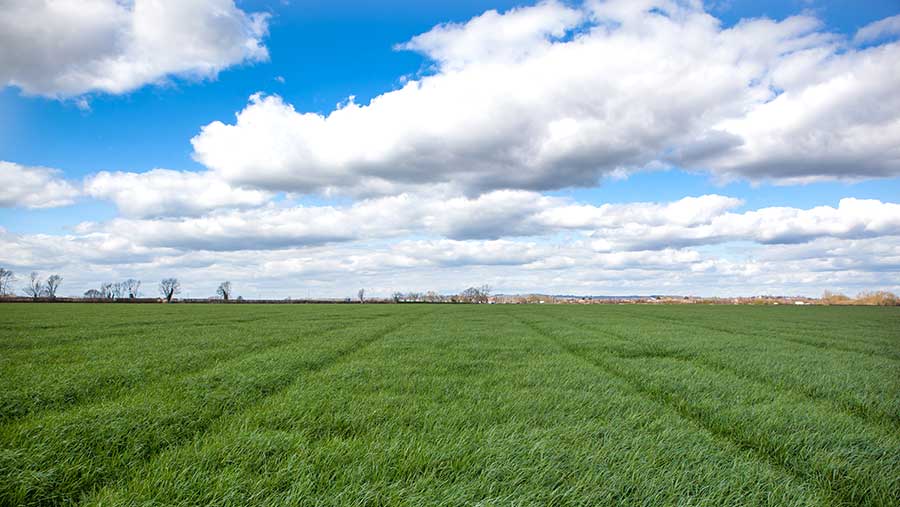Advertiser content
Autumn reseeds will improve unproductive swards
Provided by
Barenbrug UK specialises in grass breeding and production for agriculture, sport and leisure. The Barenbrug name has been synonymous with the introduction of innovative grass solutions and is raising the standard in the research and breeding of forage and amenity grasses in the UK.
Grassland impacted by dry periods can be rejuvenated by an autumn reseed to maximise production ahead of next season.
Increasing returns from grassland
Replacing unproductive swards with modern grass varieties this autumn will increase returns from grassland, avoid carrying too many underperforming fields, and reduce the risk of running short on forage or grazing supplies.
Janet Montgomery, agriculture product manager for leading grass seed breeder Barenbrug UK, says that growing modern varieties will increase a farm’s fodder flow going into 2024 and make the farm more resilient to external factors, such as the weather and rising external costs.
“High input costs and dry summers may have prevented some farmers from carrying out planned reseeding works, which could subsequently cause grass quality to decline.
“However, autumn offers an ideal time to replace these tired and underperforming swards to increase key metrics next year.
“It is worth remembering that the grass seed won’t be the most expensive part of the reseed, and growing the right varieties suited to your system will offer yield and quality increases, along with biodiversity improvements for many years,” Janet explains.
“A well-established reseed, with a simple multi-species mix such as Barenbrug’s BARMIX, will outperform current swards for five years or more, helping to sustain your farm’s resilience by maximising your grassland.”

© Barenbrug
Extreme weather implications
Extended periods without rainfall can lower the amount of biomass produced by grassland and reduce long-term performance if pastures are severely affected.
To help farmers plan and prioritise the areas in most need of work, Barenbrug’s Grass Index categorises swards into one of five areas.
Swards at Index One are the most unproductive, featuring older varieties and plenty of gaps for weeds to grow, and low soil health.
In contrast, Index Five will feature a well-maintained consistent grass crop, with high-yielding sown species, such as perennial ryegrass, in addition to species such as chicory, clover and plantain, to increase biodiversity.
Janet continues: “There is no need to remove partly productive areas if there are other pastures at lower yield levels. By indexing fields, it helps to put reseeding into perspective and approach it in a manageable way.
“Assessing how swards have been impacted by the weather extremes enables farmers to carry out remedial work to repair them back to full productivity.”
Underperforming fields need to be addressed to avoid a reduction in a farm’s fodder flow and make the whole system more resilient.
Part of this could be introducing species, such as cocksfoot, that are able to withstand drought or waterlogging better thanks to their deeper rooting.
“Reseeding pastures is a multifactorial decision considering time, money, machinery availability and knowledge of key factors in the operation.
“However, in cases where swards are at an Index Two or lower, a greater cost to the farm business will be leaving unproductive swards to decline further.
“It is also worth remembering that a reseeded area will offer increased returns for several years, so the investment can be spread over this period,” comments Janet.
Barmix – a manageable multi-species
A popular first mix for farmers exploring multi-species swards is Barenbrug’s Barmix, which contains four grass species and an optional clover.
Barmix offers increased biodiversity, whilst being easy to manage and able to fit into most existing farming systems. Barmix has the right mix of species to allow strong performance in a variety of areas, as Janet explains.
“Barmix is a low-input, high-output mix for grassland farms, which offers the flexibility to graze or produce silage.
“It has some deep-rooting species, such as cocksfoot and tall fescue, that are well adapted to wet conditions, while the perennial ryegrass element is shallow rooted and highly productive.
“Timothy provides high palatability and will increase consumption, and there’s the option to add clover to aid nitrogen fixation and reduce fertiliser requirement.”
Taking a field out of production this autumn doesn’t mean it won’t be able to contribute to the feedstocks next spring, and better-quality grassland will offer farms more versatility to turnout earlier or fatten livestock quicker, and ultimately improve returns from reseeded swards over the next several years.
Find out more about Barmix.
